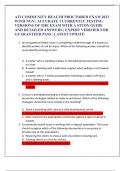Essay
A Theatre for Cold Catholicism: A Historical Analysis of Paolo Sorrentino’s The Young Pope in relation to American-European political bonds during the Early Cold War
- Instelling
- Universiteit Utrecht (UU)
Written in MLA 7 with footnotes This argumentative essay addresses the American-European bonds between the Vatican during the Cold War under Pope Pius XII and the American government. By means of an analysis of the Netflix series The Young Pope with Jude Law as the fictional Pius XIII. The resea...
[Meer zien]













